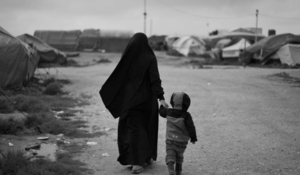Dealing with Radicalization in IDP Camps

“Dealing with Radicalization in IDP Camps“
Authors | Editors: Kuznar, L. (NSI, Inc.); Jafri, A. (NSI, Inc.); Kuznar, E. (NSI, Inc.)
NSI Reachback Report Preview
The Middle Eastern region of the USCENTCOM area of responsibility (AOR) currently has approximately 20 million displaced persons, many of whom live in camps (see NSI Reachback question B3 response). These people have been uprooted, lost their livelihoods, and in many cases experienced severe trauma. These stresses place them at risk of radicalization as their frustrations and grievances increase with time. Research was conducted on counter-radicalization and deradicalization programs appropriate for use in refugee camps, returning a broad range of counter-radicalization measures, and screening and segregation protocols. Their validity, respective pros and cons, and implementation considerations are reported here. Determining the appropriate measures for protecting refugees, building community resilience, and triaging individuals who would most benefit from deradicalization programs can inform how USCENTCOM can take action, or support organizations that are engaged with deradicalization in refugee camps.
We used the following definitions of key terms throughout the report.
• Radicalization refers to a process whereby individuals (and even groups) develop a mindset that can, under the right circumstances and opportunities, increase the risk that he or she will engage in violent extremism or terrorism (Clutterbuck, 2015).
• Deradicalization implies that an individual change his or her thought and values toward more mainstream views. Actually changing one’s views and assessing one’s values is extremely difficult and presents ethical issues in light of US principles of freedom of conscience. A more achievable and less problematic goal is disengagement, which is a shift away from supporting violence as a means for achieving political or ideological goals; a person may retain radical views, but violent behavior, which is observable, can be mitigated. As a further consideration, much of what is addressed in this report is more properly defined as counter-radicalization, efforts to counter and prevent radicalization efforts by militants. Unfortunately, the term deradicalization is often used in research and policy variously to mean deradicalization, disengagement, and counter-radicalization. These distinctions will be made when possible in this report (Horgan, 2009; Clutterbuck, 2015).
The summarized, overall findings of this report are as follows:
- An integrated system of interventions addressing individual through community needs is necessary for effective counter-radicalization and deradicalization efforts, bearing in mind that the primary goal is disengagement from violence (see Figure 1). Such an integrated system addresses deradicalization and disengagement at multiple social scales, enabling protection of individual refugees from radicalization up through building community resilience against radicalization.
- Limiting the time spent in a camp setting is key to preventing the long-term radicalization of refugees. The average time refugees spend in camp is seventeen years, enough time for a generation to grow up with deep resentment and grievance that militants can use for radicalizing a population.
- Screening instruments exist for triaging an individual’s degree of radicalization and propensity for violence. However, they are useful only in the hands of trained professionals.
- One consideration concerning triage is the extent to which radicalized individuals and groups should be segregated from, versus dispersed into, the general population. There are pros and cons to each approach, and each has its associated ethical dilemmas. The competing benefits and risks need to be weighed when deciding what degree of separation or dispersal is appropriate for a particular camp; this report provides guidelines for weighing the pros and cons.
Drivers of radicalization occur in layers from the individual level up to the wider community that are mutually influencing. As a result, deradicalization and disengagement interventions designed to protect refugees from and build community resilience to radicalization must address these levels in mutually supportive ways. Consequently, this report will be structured as follows: The first two parts of the question of focus are answered in Section I, which addresses deradicalization and disengagement efforts. The third part of the question is answered in Section II, which describes practical matters of screening refugees and managing camps through segregation and dispersal mechanisms.
Download Publication
Comments